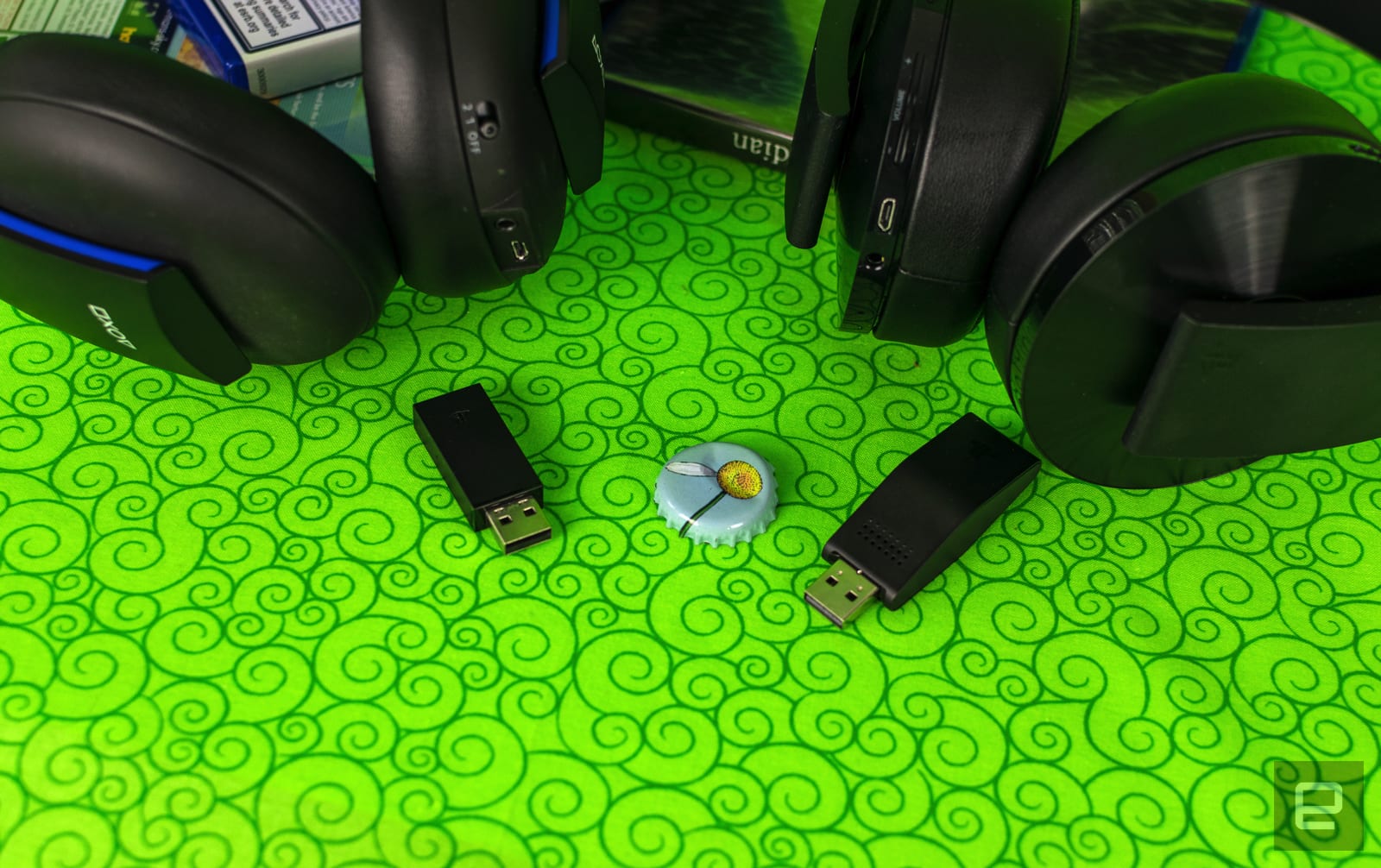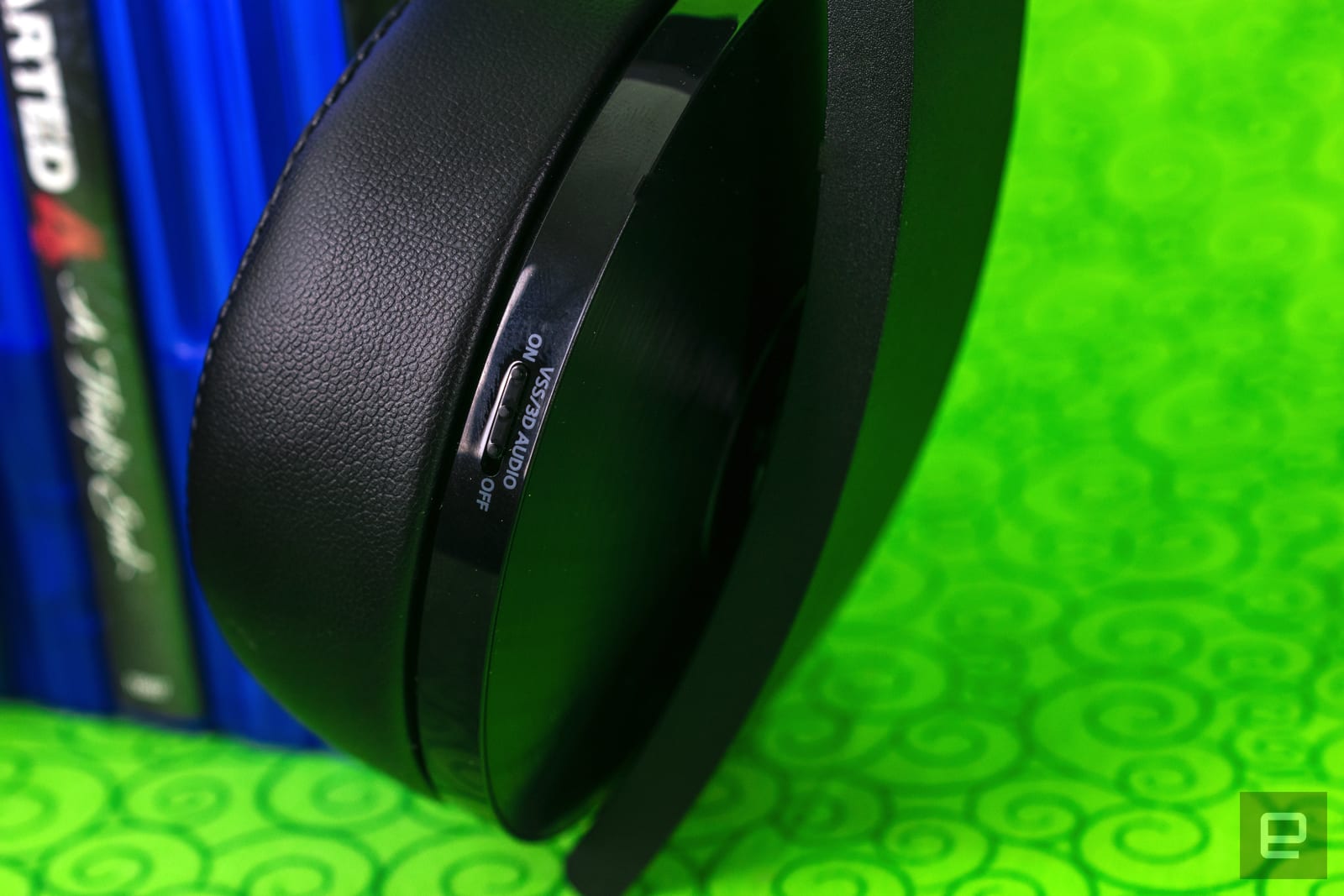 Timothy J. Seppala, Engadget
Timothy J. Seppala, Engadget
There's no shortage of gaming headsets on the market, and in an effort to distinguish themselves, manufacturers are turning to gimmicks to stand out from the competition. Sony, for example, has several PlayStation-branded pairs, and now it's adding another to the mix, in hopes that 3D audio will be enough to earn your $150. After spending some time with the new PlayStation Platinum Wireless Headset, though, I'm not sure it deserves its asking price.
Gallery: Hands-on: PlayStation Platinum wireless headset | 17 Photos
 17
17



 +13
+13
I came away unimpressed by the company's last headset, the Gold Wireless, so I was hoping that a higher-end-sounding name would translate to better headphones. In terms of construction, the Platinum definitely feels more solid than its predecessor, but it isn't quite as premium as the name suggests. For instance, the only non-plastic bit is a brushed aluminum band connecting the two arms. The only foam padding, meanwhile, is on the ear cups. And instead of offering cushioning on the headband, there's a flexible rubber strap that's supposed to stretch to accommodate your noggin.
My admittedly large head has never gotten along with this kind of padding design, and that's true here as well. After 20 minutes, I was acutely aware of the rubber band pressing against my skull. After 40 minutes, I couldn't wait to take them off. That doesn't bode well for a device you're supposed to wear for extended periods of time. Of course, this is entirely subjective -- if you have a smaller head than I do, you might not have this problem.
The ear cups are more comfortable. They fit well around my ears, and the padding was nice and plush. The attached arms fold up for easy storage, but when they're closed they don't lock in place, which allows them to wiggle around. Still, they're better at staying closed than the flimsy Gold edition was.

At least setup is as simple as ever. Simply plug the wireless adapter into an open USB slot on your PS4 and that's about it. It's worth noting that while setting up the device using the Wireless Headset companion app, the Platinums were the only thing I could have plugged in. Leaving my PSVR connected via USB caused an issue with pairing the headset to my console. Same goes for wirelessly adding new audio presets. The latter is super-convenient, making swapping between presets a cinch. What's more, there are two slots for different audio presets, and this time around both are customizable.
The thing is, in use, the presets really don't sound too different from each other. I used the Uncharted 4 preset for a few games of Rocket League, for instance, and then swapped to the Last Guardian preset and couldn't tell anything had changed.
But what about the 3D audio? As of now, the only non-VR game that supports it is last spring's Uncharted 4. Sony promises the selection will expand over time. Naughty Dog's audio design is always impeccable, but chances are you've already played through the game a few times by now and aren't going to return. Turning it on, footsteps in the snow sounded a bit more nuanced against the wind snaking through a Scottish cave, and sounds like water drips were a touch more distinct.

There are some interesting reverb effects, and certain sounds have more space between them in the soundscape, but turning the effect on didn't help much. In fact, the bass is a little deeper when that effect is turned off. This is likely the result of compression. When you turn the 3D audio switch on, the changes it makes are subtle and bring out nuances in the sound effects you otherwise wouldn't hear. It's like hitting the "Mega Bass" button on an old Sony Walkman, but doesn't produce as stark a change.
Unlike traditional games, however, every PSVR title supports 3D audio. The thing is, you have to connect the Platinum to the PSVR's in-line audio controller via an aux cable to use it. So it adds another cord to an already cluttered setup. Plugging in has another downside in addition to the inconvenience: The volume isn't nearly as loud. You also lose onboard controls for changing volume and turning the 3D audio/virtual surround off.
As far as actual sound quality goes, I prefer Turtle Beach's Stealth 350VR headset. It's amplified (the Platinum isn't when connected to PSVR), so the sound is not only louder, but richer as well. Also, it costs just $100, compared with $150 for the Platinum, and fits well over the virtual reality helmet. As for the Platinum, it's pretty snug, but the PSVR's headset helped keep the Platinum's rubber band from pushing against the top of my head.
As it stands, there's no reason to buy the Platinum headset just yet. For $10 more, you can get the well-reviewed Astro A30, which, while it doesn't support 3D audio, still sounds great, and you can use it with multiple consoles, not just the PlayStation 4. The Platinum is a definite step up from Sony's Gold headset in terms of fit and finish, but the flagship feature -- 3D audio -- still doesn't have wide enough games support to justify the price.



 +13
+13